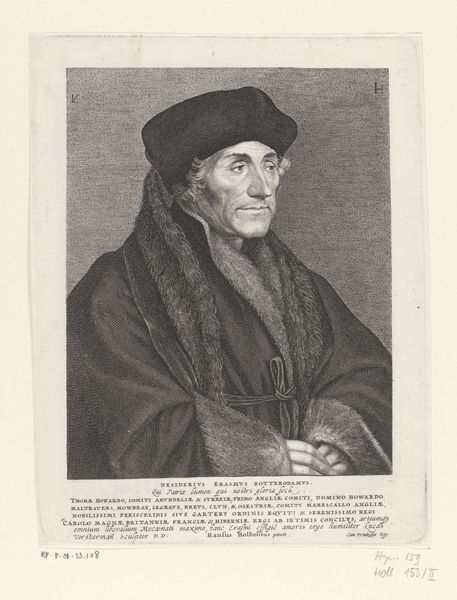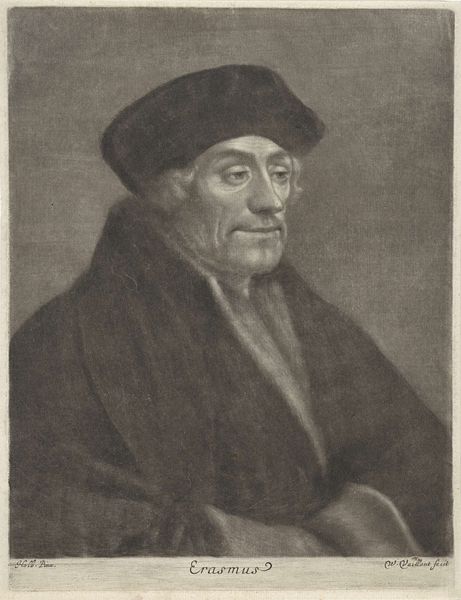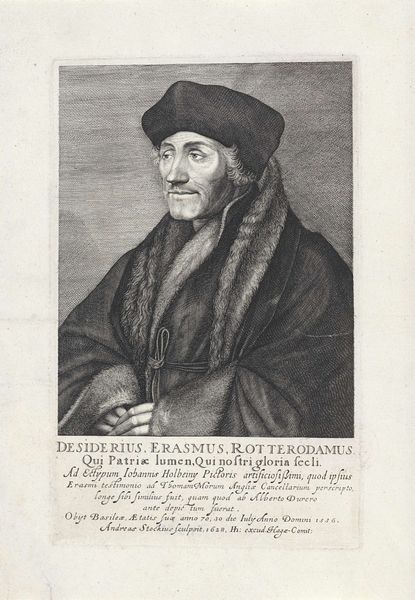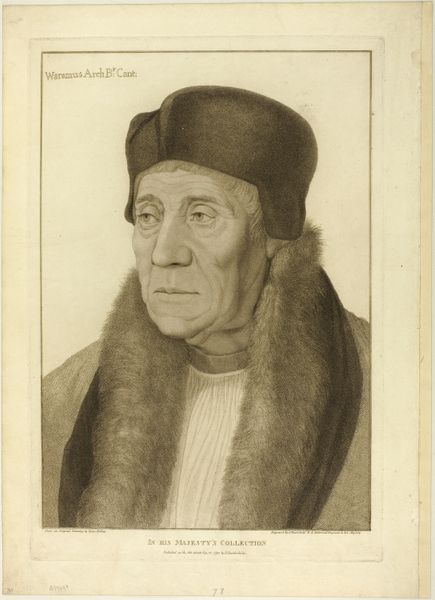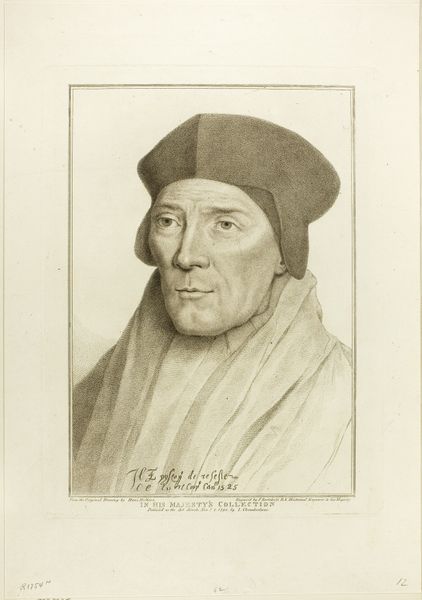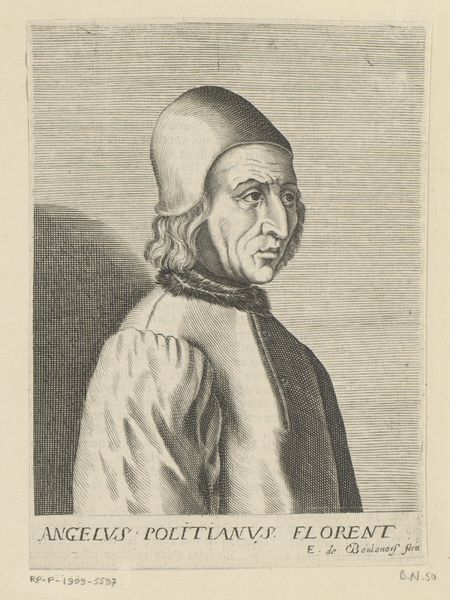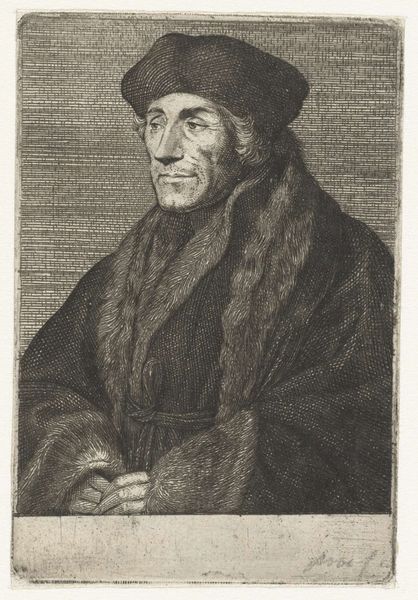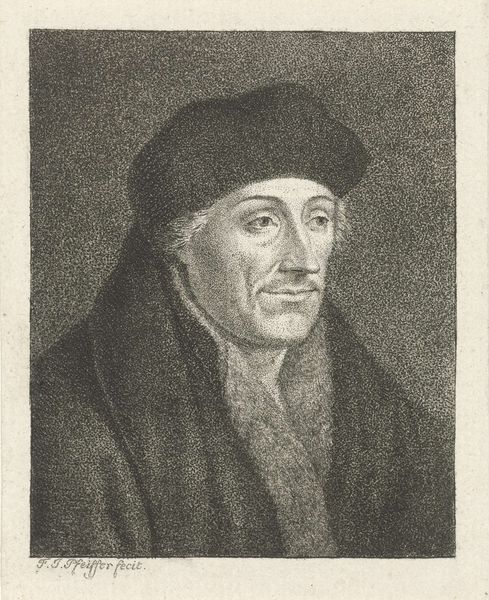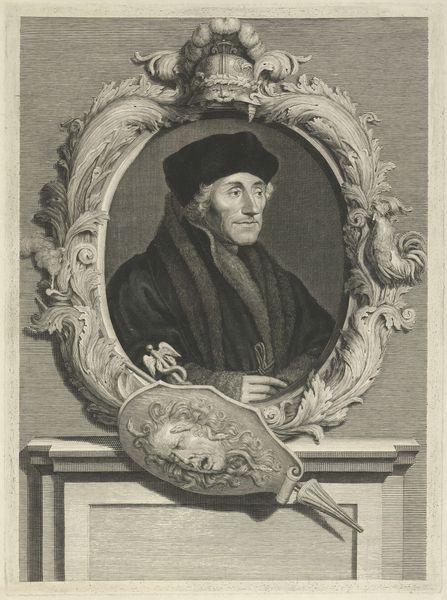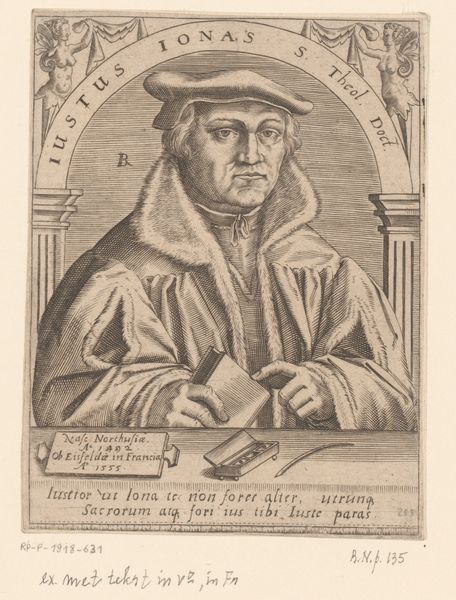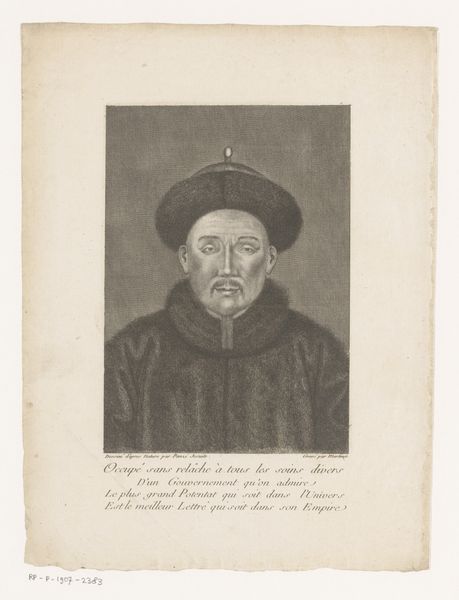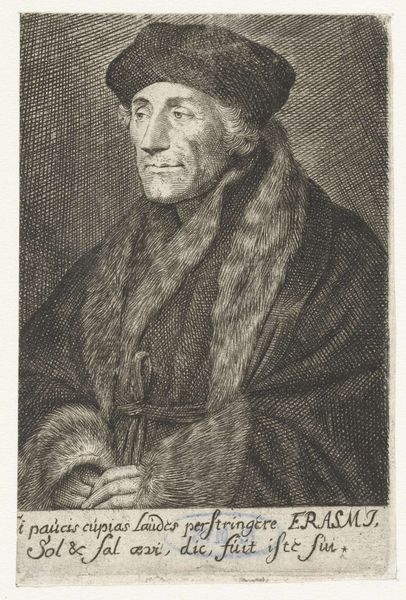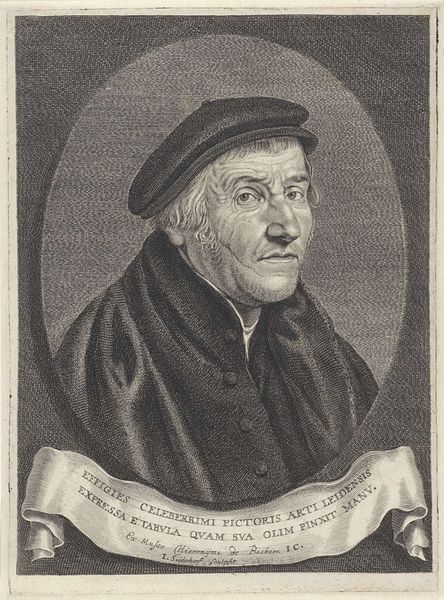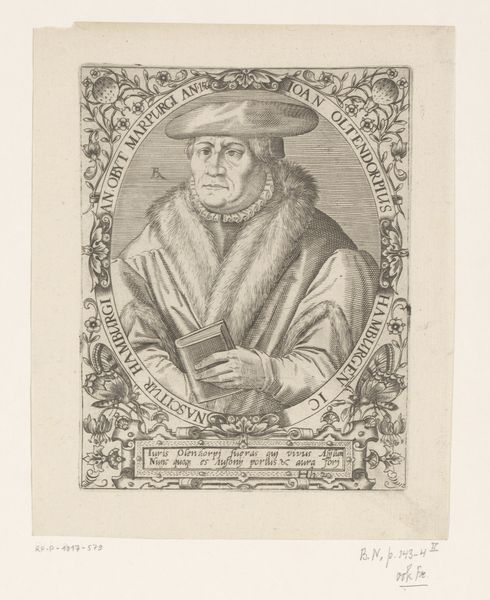
print, intaglio, engraving
#
portrait
#
baroque
# print
#
intaglio
#
old engraving style
#
charcoal drawing
#
engraving
Dimensions: height 190 mm, width 143 mm
Copyright: Rijks Museum: Open Domain
Curator: Edme de Boulonois created this engraving, "Portret van Desiderius Erasmus", in 1682. The work employs the intaglio technique on a printed surface. Editor: It has this very severe, almost academic air about it. The subject seems a bit burdened by all those heavy robes. Curator: Well, Erasmus, as a humanist scholar, occupied a weighty position in society. This piece reflects the visual language of power and intellect during the Baroque era. We can see the socio-political role of portraiture emerging here. Editor: Exactly. Portraits always carry that baggage of social status. It is like, what narrative does the subject project to others? I cannot help but wonder how much control Erasmus had over this visual representation. Did he consciously agree with such presentation of authority? Curator: Interesting point. He was an advocate for religious reform and intellectual freedom, and the image aligns him with the elite. But considering the turmoil of the Reformation, positioning oneself as a figure of authority might have been strategically important for Erasmus, considering both personal safety and promotion of his intellectual work. Editor: It's almost as if he is performatively wearing the trappings of power, rather than truly embodying them. There’s something detached in his eyes, at odds with the fur-lined coat, hinting at some kind of complicated tension there. I want to consider him beyond this single visual point of view and hear his counter narrative against it. Curator: This speaks to how identity is constructed, both individually and through societal lenses. And this intaglio print made the image of Erasmus accessible. What were the circulation strategies? What kind of public did it serve? Editor: The ability to disseminate one's image through print—powerful for crafting and controlling public perception, like a proto-PR campaign! Thanks to art history for keeping track of these early marketing efforts! Curator: I appreciate how this artwork reveals the negotiations of identity, power, and representation in the Baroque world. Editor: Absolutely. The visual politics here continue to provoke reflection.
Comments
No comments
Be the first to comment and join the conversation on the ultimate creative platform.
